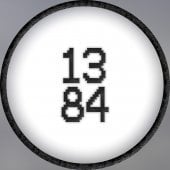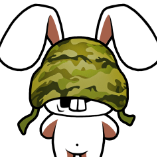-
Posts
33 -
Joined
-
Last visited
-
Days Won
1
chris1384 last won the day on March 30 2023
chris1384 had the most liked content!
Recent Profile Visitors
1,411 profile views
chris1384's Achievements

Rat (9/54)
9
Reputation
-
-- onClientVehicleReverse / chris1384 local reversing = {vehicles = {}} local getElementsByType = getElementsByType local root = getRootElement() local pairs = pairs local triggerEvent = triggerEvent local getElementType = getElementType local getElementMatrix = getElementMatrix local getElementVelocity = getElementVelocity function reversing.start() local vehicles = getElementsByType("vehicle", root, true) local vehicles_count = #vehicles if vehicles_count > 0 then for i=1, vehicles_count do local vehicle = vehicles[i] reversing.vehicles[vehicle] = reversing.detect(vehicle) end end end addEventHandler("onClientResourceStart", resourceRoot, reversing.start) function reversing.render() for vehicle, d in pairs(reversing.vehicles) do local r = reversing.detect(vehicle) if d ~= r then reversing.vehicles[vehicle] = r triggerEvent("onClientVehicleReverse", vehicle, r == 1) end end end addEventHandler("onClientRender", root, reversing.render) function reversing.add() local vehicle = source if getElementType(vehicle) == "vehicle" then reversing.vehicles[vehicle] = reversing.detect(vehicle) end end addEventHandler("onClientElementStreamIn", root, reversing.add) function reversing.remove() local vehicle = source if getElementType(vehicle) == "vehicle" then reversing.vehicles[vehicle] = nil end end addEventHandler("onClientElementDestroy", root, reversing.remove) addEventHandler("onClientElementStreamOut", root, reversing.remove) function reversing.detect(vehicle) local m = getElementMatrix(vehicle) local x, y, z = getElementVelocity(vehicle) local d = (x * m[2][1]) + (y * m[2][2]) + (z * m[2][3]) return (d < 0 and 1) or 0 end usage: addEvent("onClientVehicleReverse") addEventHandler("onClientVehicleReverse", root, function(reversing) iprint(vehicle, reversing) -- OUTPUT -- vehicle:element, true if reversing, false otherwise end)
-
Everything is working now. It was easier than I thought lol. I was planning to use this in the future, I had to get over the basics first because that's where it screwed me up the most. Thanks for the tip And thank you all for helping!
-
It's going to be hard to explain so bear with me. Supposed we have a function like this (function is in a string): exports.myresource:addProperty("security", "function(player) return getPlayerName(player) == 'owner' end") Then, in myresource the string is then put in a loadstring function, as following (it only checks it, doesn't add it anywhere): local testPlayer = getPlayerFromName("player1") -- testing purposes local loadstringed = loadstring(name.. " = ".. func_str) local success, info = pcall(loadstringed, testPlayer) iprint(success, info) -- outputs: true, nil Apparently everything seems to work, the function does indeed exist, but doesn't seem to take any parameters into it. How do you make a function loaded with loadstring() that also supports parameters?
-
since you mentioned that you would use IDs for the players, perhaps you are using (My)SQL for your saves use dbExec to insert or update a database column, dbQuery and dbPoll to get the results, use os.date() to retrieve the exact date and time (it's using servers time) or.. use getPlayerAccount, setAccountData and os.date() to set an accounts last login data then use getPlayerFromName, getPlayerAccount and getAccountData for /lastlogin
-
math.lerp pentru euler angles (generat de chatgpt pentru python, convertit de mine pentru lua) function lerp_angle(start_angle, end_angle, progress) local start_angle = math.rad(start_angle) local end_angle = math.rad(end_angle) if math.abs(end_angle - start_angle) > math.pi then if end_angle > start_angle then start_angle = start_angle + 2*math.pi else end_angle = end_angle + 2*math.pi end end local angle = (1 - progress) * start_angle + progress * end_angle return math.deg(angle) end
-
chris1384 started following dxDrawLine3D through objects/buildings , [REL] TAS - Segmented Run Tool , Ce vă doriți să vedeți în comunitatea românească? and 1 other
-
Hey everyone, I'd like to introduce you to my tool that essentially lets you create seamless segmented runs for any race map. The tool is still in development (and I'm very lazy lol) so updates will be shown on the main GitHub page: https://github.com/chris1384/mta-tas-dm Here's a little showcase using the janky, older tool that I've made back in 2020: Here's the behind the scenes using the newer tool that's available for download: Thanks for the attention and have fun!
-
am avut si rpp o seara =))
-
un server de race n-am mai avut de multi ani servere de freeroam sunt dar nu populate dayz-ul a murit si nu mai e nimeni interesat sa mai faca unul de ctv/tactics/assault sau chiar multigamemode nu s-au mai auzit sau n-a facut nimeni (except 4 me) daca nu le faci la playeri pe plac, te trezesti cu hate de la copii care cred ei ca stiu mai bine daca se face roleplay sau orice altceva si nu bagati moduri de 3gb in total, degeaba vi l-ati mai deschis am ajuns la peak-ul mta-ului.
-
- noclip ver. 1.3.0 Resursa de airbreak intitulat noclip, fiindca n-am gasit pe nicaieri unul up-to-date sau functional, am decis sa fac eu unul. Este recomandat doar pentru development, setarile le gasiti in fisierele din resursa, acestea sunt necompilate. Have fun! Download: https://community.multitheftauto.com/index.php?p=resources&s=details&id=18592
-
part ii returneaza playerul dupa o parte a numelui (useful af) function getPlayerFromPartialName(name) local name = name and name:gsub("#%x%x%x%x%x%x", ""):lower() or nil if name then for _, player in ipairs(getElementsByType("player")) do local name_ = getPlayerName(player):gsub("#%x%x%x%x%x%x", ""):lower() if name_:find(name, 1, true) then return player end end end return false end verifica daca contul player-ului este intr-un ACL Group function isPlayerInACL ( player, acl ) local account = getPlayerAccount ( player ) if ( isGuestAccount ( account ) ) then return false end return isObjectInACLGroup ( "user."..getAccountName ( account ), aclGetGroup ( acl ) ) end verifica daca player-ul este intr-un team function isPlayerInTeam(player, team) return getPlayerTeam(player) == (type(team) == "string" and getTeamFromName(team) or (type(team) == "userdata" and team or (getPlayerTeam(player) or true))) end returneaza distanta dintre camera si element function getElementDistanceFromCamera(element) local cX, cY, cZ = getCameraMatrix() local eX, eY, eZ = getElementPosition(element) return getDistanceBetweenPoints3D(cX, cY, cZ, eX, eY, eZ) end returneaza viteza unui element in km/h function getElementKMh(element) if element and isElement(element) then local v = {getElementVelocity(element)} return math.floor(((v[1]^2 + v[2]^2 + v[3]^2)^(0.5))*180) end end returneaza un string fara Hex color codes: #00FF00Player > Player function unHex(string) return (type(string) == "string" and string:gsub("#%x%x%x%x%x%x", "")) or false end recomandat pentru cei ce lucreaza cu functii dx, screenR returneaza raportul ecranului (de obicei 16/9 sau 1.(7)) local screenW, screenH = guiGetScreenSize() local screenR, screenN = screenW/screenH, 1280/screenW screenN il folositi pentru dx scaling, daca lucrati in rezolutia 1920/1080, folositi 1920/screenW, dupa va folositi de acea variabila de a inmulti fiecare constanta folosit in functiile dx (nu inmultiti screenN cu screenW sau screenH fiindca aceste 2 nu sunt constante) exemplu: local screenW, screenH = guiGetScreenSize() local screenN, screenYnative = 1280/screenW, 720/screenH -- // a 2-a variabila este foarte putin folosita, dar o vom folosi aici doar ca exemplu addEventHandler("onClientRender", root, function() -- FOLOSIND DOAR CONSTANTE (rosu) dxDrawRectangle(screenW/2 - sizeX/2, screenH/2 - sizeY/2, 100, 200, tocolor(255, 0, 0, 255)) -- // -- FOLOSIND x*screenN, y*screenYnative (verde) local sizeX, sizeY = 100*screenN, 200*screenYnative dxDrawRectangle(screenW/2 - sizeX/2, screenH/2 - sizeY/2, sizeX, sizeY, tocolor(0, 255, 0, 150)) -- // end) acest script deseneaza doua dreptunghiuri (rosu si verde) in mijlocul ecranului, veti observa ca dreptunghiul verde va avea dimensiunile relative rezolutiei ecranului, try it out. evident, se poate folosi aceasta variabila si in pozitionarea *elementelor* dx
-
genereaza un float intre lower si greater function randomFloat(lower, greater) return lower+math.random()*(greater-lower) end returneaza offset ul unui element in object space function getPositionFromElementOffset(element, offX, offY, offZ) local m = getElementMatrix(element) local x = offX * m[1][1] + offY * m[2][1] + offZ * m[3][1] + m[4][1] local y = offX * m[1][2] + offY * m[2][2] + offZ * m[3][2] + m[4][2] local z = offX * m[1][3] + offY * m[2][3] + offZ * m[3][3] + m[4][3] return x, y, z end self-made: returneaza secundele+ms gametime-ului local secondChange = 0 local secondStart = getTickCount() function convertTimeToSeconds() local hour, minute = getTime() if minute ~= secondChange then secondChange = minute secondStart = getTickCount() end return hour*60+minute+((getTickCount()-secondStart)/getMinuteDuration()) end sterge value dintr-un table function removeValueFromTable(table, value) if type(table) == "table" then for k,v in ipairs(table) then if v == value then table.remove(table, k) return true end end end return false end limiteaza value intr-un interval function clamp(value, min, max) return math.max(min, math.min(value, max)) end returneaza offset-ul unui punct bazat pe rotatie si distanta 2D function getPointFromDistanceRotation(x, y, dist, angle) return x+math.cos(math.rad(90-angle))*dist, y+math.sin(math.rad(90-angle))*dist end self-made: genereaza un cubic bezier curve in 3D -- x, y, z - start -- x2, y2, z2 - end -- bx, by, bz - start handle -- b2x, b2y, b2z - end handle -- t - time float function cubicBezier3D(x, y, z, x2, y2, z2, bx, by, bz, b2x, b2y, b2z, t) local p1 = {lerp(x, bx, t), lerp(y, by, t), lerp(z, bz, t)} local p2 = {lerp(bx, b2x, t), lerp(by, b2y, t), lerp(bz, b2z, t)} local p3 = {lerp(b2x, x2, t), lerp(b2y, y2, t), lerp(b2z, z2, t)} local l1 = {lerp(p1[1], p2[1], t), lerp(p1[2], p2[2], t), lerp(p1[3], p2[3], t)} local l2 = {lerp(p2[1], p3[1], t), lerp(p2[2], p3[2], t), lerp(p2[3], p3[3], t)} return lerp(l1[1], l2[1], t), lerp(l1[2], l2[2], t), lerp(l1[3], l2[3], t) end function lerp(a, b, c) return a + (b - a) * c end
-
chris1384 changed their profile photo
-
Solved.
-
Oh, now I realised that i didn't wrote the title correctly ? my bad. Anyway, I want the dxDrawLine3D to be visible through objects, for example: Point A at Caligulas Casino and point B at Grove Street, without dissapearing.
-
The question is in the title, is it possible? And how?
-
Learned a lot from your code, I didn't know how to deal with the "onClientRender" and "onClientColshapeHit" events, so I though tables were a good idea for solving this . Thanks!






